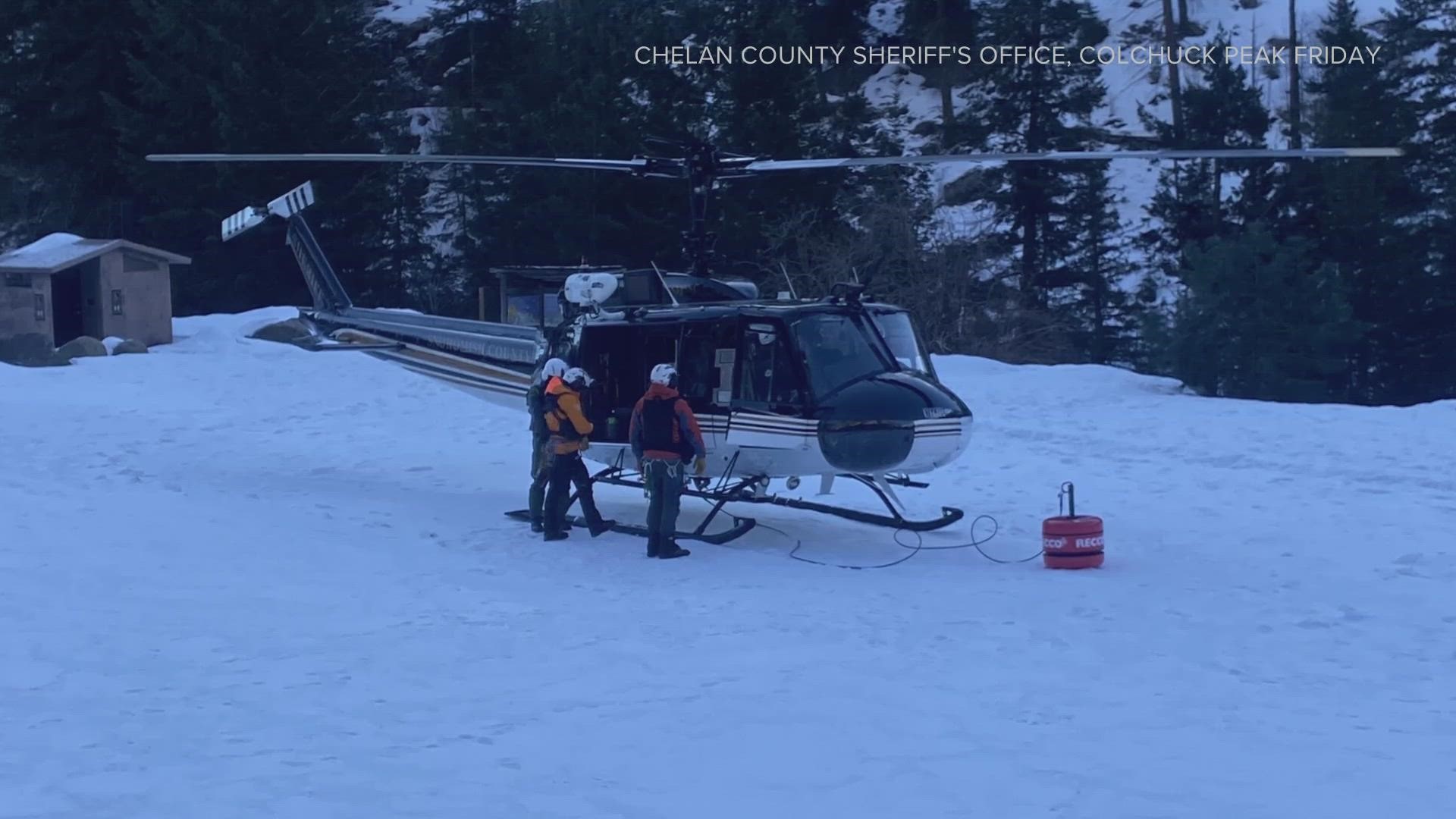CHELAN COUNTY, Wash. — Editor's note: The above video on a victim of the fatal Colchuck Peak avalanche being recovered originally aired on Feb. 24, 2023.
The avalanche that killed three climbers on Colchuck Peak in late February was relatively small, but it became deadly due to the "unforgiving terrain," according to a final report issued by the Northwest Avalanche Center (NWAC).
NWAC estimated the avalanche likely only registered as a D1.5 in severity, whereas a D5 would be the most severe.
Due to steep slope angles, frequent terrain traps and extensive height differences between landforms, the Northeast Couloir where the avalanche was triggered was already "particularly susceptible to avalanche hazards," according to the report.
The avalanche "resulted in a long and traumatic fall through exposed rocks, short cliffs and narrow-walled chokes," the report found. "These features can quickly magnify the consequences of even the smallest slide."
In all, six climbers were attempting the Northeast Couloir route on Colchuck Peak on Feb. 19 when the lead climber triggered a slab avalanche at around 1:15 p.m. that caught and carried four of the members at least 1000 vertical feet, nearly to the base of the couloir where it becomes less steep.
The climbing party reported light snowfall that morning which became heavier while they ascended. At the time of the accident, NWAC had rated avalanche danger to be moderate near and above the tree line and low below the tree line, with increasing danger during the day.
Two of the climbers were below where the slab avalanche had been triggered and were protected by a large rock. Unsure of what happened to their teammates, they continued to ascend the peak to see if any of the others remained above.
Once they made it back down the peak, they found two of the climbers dead, with one having sustained "obvious head trauma," according to the report. Two other climbers were injured but alert.
One of the injured climbers convinced the others to head back to camp without him because he wasn't able to get there without help. By the time they returned for him the next day, he had died.
The climbers sent someone who had stayed behind at their base camp to get help. He traveled through the night until he reached his car at the winter parking area. He was able to finally alert authorities to the avalanche at 8:30 a.m. on the morning of Feb. 20.
Avalanche conditions were too dangerous to attempt to reach the deceased climbers that day. Instead, 22 search and rescue personnel helped the remaining climbers at the base camp get to safety.
Conditions weren't favorable for a recovery operation until Friday, Feb. 24. The Chelan County Sheriff's Office, Chelan County Mountain Rescue and the Snohomish County Helicopter team searched for the bodies.
One climber's body was found beneath a foot of snow and recovered. He was identified as Seong Cho, a 54-year-old Korean national residing in West Hartford, Connecticut.
The bodies of the other climbers, identified as Jeannie Lee, 60, and Yun Park, 66, weren't visible.
Search personnel were hoisted down to the site of the avalanche to probe for the locations of the other bodies but they were unsuccessful. The bodies of Lee and Park have yet to be recovered.
NWAC said radios could have improved communication between the group, and satellite communication devices could have expedited the process of reaching rescue authorities.
While avalanche rescue gear likely would not have saved the lives of the climbers who died in this particular incident, NWAC said transceivers would have allowed teammates and/or search and rescue members to quickly locate the victims in the event of subsequent avalanches or additional snowfall.

